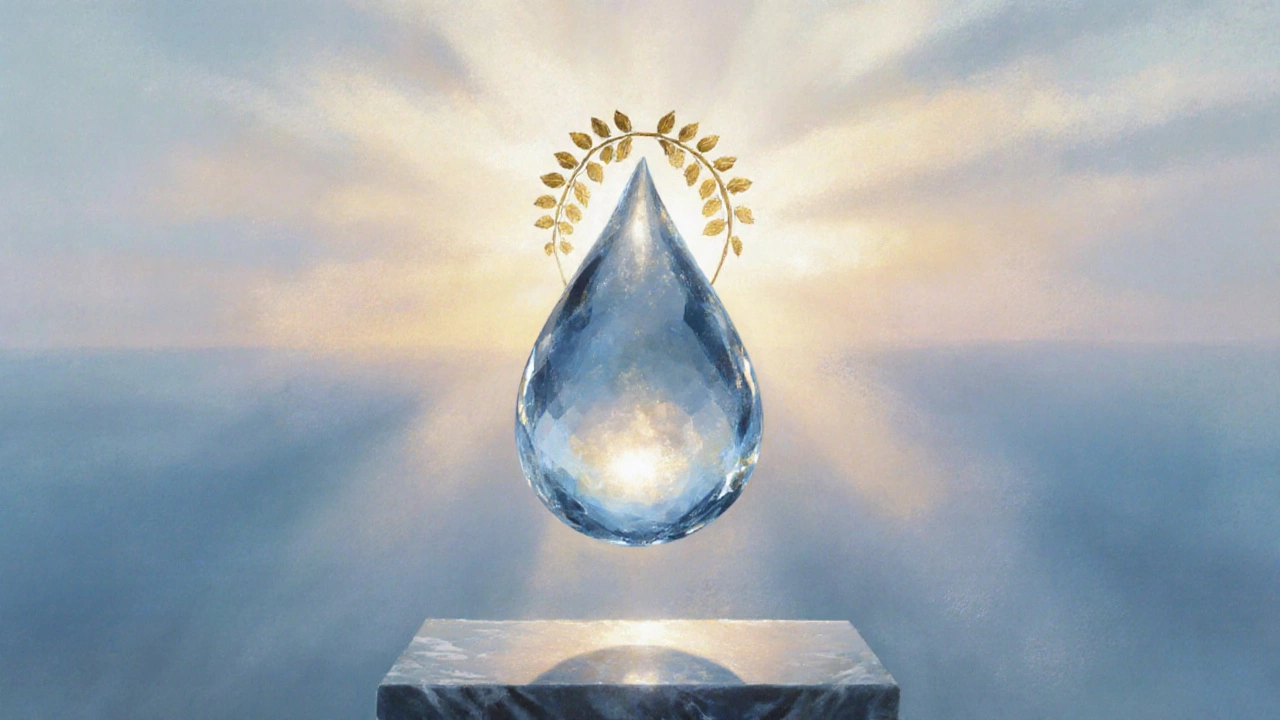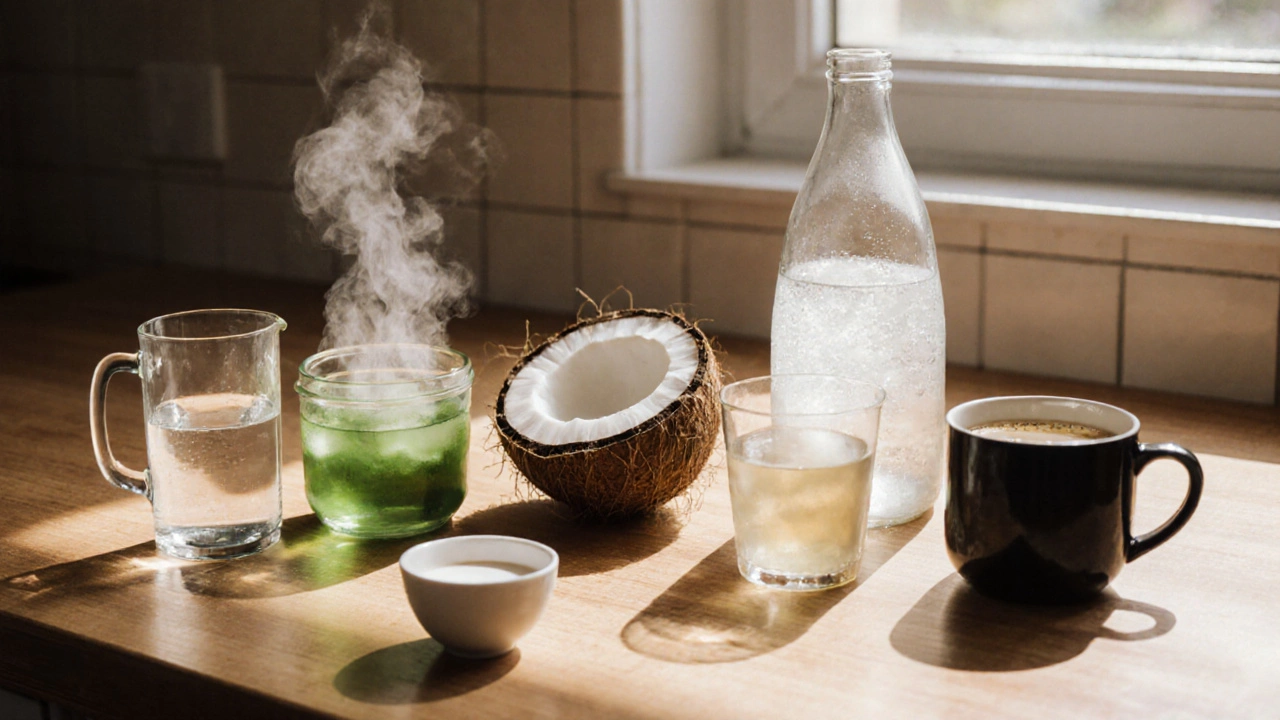Healthiest Drink Selector
Based on the article's scientific scoring system, select your priority health goal to find the best drink for your needs.
Why the Quest for the #1 Healthiest Drink Matters
We all hear that “what you drink matters,” but with endless options-from sparkling sodas to exotic elixirs-it’s easy to feel stuck. Picking the right beverage can boost energy, support digestion, and even protect against chronic disease. This guide cuts through the noise, explains the science behind the top contenders, and tells you exactly which drink earns the #1 spot.
How We Rank Healthiness
Before naming the winner, let’s lay out the scorecard. The ranking combines six measurable factors that matter for real‑world health:
- Hydration efficiency - how well the drink replaces lost fluids.
- Calorie load - low‑calorie choices help maintain a healthy weight.
- Micronutrient density - vitamins, minerals, and electrolytes per serving.
- Antioxidant power - ability to neutralize free radicals.
- Probiotic content - live cultures that aid gut health.
- Added sugars or artificial additives - the fewer, the better.
Each drink gets a score from 0 to 10 on each metric, then we average the six scores for a final rating.
The Contenders
We evaluated eight popular non‑alcoholic options that show up in daily routines or health blogs.
- Water is a clear, odorless liquid that makes up about 60% of adult body weight and is essential for every cellular process.
- Green tea is a lightly oxidized tea leaf rich in polyphenols, especially EGCG, that support metabolism and heart health.
- Kefir is a fermented milk drink packed with Lactobacillus and Bifidobacterium strains for gut balance.
- Kombucha is a fizzy fermented tea containing organic acids and a modest probiotic load.
- Coconut water is the clear liquid from young coconuts, naturally high in potassium and electrolytes.
- Herbal tea is an infusion of dried herbs like chamomile, hibiscus, or rooibos, each offering specific phytonutrients.
- Black coffee is a roasted coffee bean brew celebrated for caffeine‑driven alertness and antioxidants.
- Oat milk is a plant‑based milk alternative made from whole oat grains, supplying fiber and B‑vitamins.
Scoring the Drinks
| Drink | Hydration (0‑10) | Calories (0‑10) | Micronutrients (0‑10) | Antioxidants (0‑10) | Probiotics (0‑10) | Added Sugar (0‑10) | Average Score |
|---|---|---|---|---|---|---|---|
| Water | 10 | 10 | 4 | 2 | 0 | 10 | 6.0 |
| Green tea | 8 | 9 | 5 | 9 | 0 | 9 | 6.7 |
| Kefir | 7 | 6 | 7 | 4 | 9 | 5 | 6.3 |
| Kombucha | 7 | 7 | 5 | 6 | 5 | 6 | 6.0 |
| Coconut water | 9 | 6 | 8 | 3 | 0 | 5 | 6.5 |
| Herbal tea | 8 | 9 | 4 | 7 | 0 | 9 | 6.2 |
| Black coffee | 6 | 9 | 3 | 8 | 0 | 9 | 5.8 |
| Oat milk | 7 | 5 | 6 | 4 | 0 | 6 | 5.0 |
Why Water Takes the Crown
Water tops the list with a perfect 10 for pure hydration and zero calories. While it doesn’t boast antioxidants or probiotics, its role as the baseline for every other metric can’t be overstated. Your cells, brain, kidneys, and muscles rely on water to transport nutrients, regulate temperature, and expel waste. Even a slight deficit-just 2% of body weight-can impair cognition and physical performance.
Most people underestimate how much water they actually need. The classic “8‑cups‑a‑day” rule is a rough median; active individuals, high‑altitude dwellers, and those in hot climates often require 3‑4L or more. The key is consistent intake throughout the day, not gulping down a massive glass once.
Because water contains no added sugars, artificial flavors, or calories, it never contributes to weight gain. In fact, drinking a glass before meals can reduce overall food intake by about 13%, according to a 2022 clinical trial at the University of Texas.
When to Choose a Complementary Drink
Water is unbeatable for baseline hydration, but specific health goals may call for something extra. Below are three scenarios and the best secondary choice.
- Boosting antioxidants: If you want a metabolism kick plus heart‑protective compounds, sip green tea. Its ORAC (Oxygen Radical Absorbance Capacity) score is roughly 1,000µmol TE per 240ml, far surpassing coffee or herbal teas.
- Supporting gut health: For probiotic power, kefir delivers 10‑20billion CFU per serving, outpacing most yogurts and kombucha.
- Replenishing electrolytes after intense sweat: Coconut water provides 600mg potassium per cup, a natural alternative to sports drinks that often hide added sugars.
Mix and match as needed, but keep water as your primary fluid source.
Practical Tips to Make Water More Enjoyable
Not a fan of plain water? No problem. Here are simple tricks that keep the health benefits while adding flavor without sugar.
- Add a squeeze of fresh lemon or lime-vitaminC and a zing that encourages more sipping.
- Infuse with cucumber slices, mint leaves, or berries for a subtle taste boost.
- Use a filtered pitcher to improve taste if tap water has a metallic aftertaste.
- Choose sparkling water with no added sodium for a fizzy upgrade.
- Set a phone reminder or use a smart bottle that tracks intake.
These hacks cost pennies and keep you far from sugary sodas.

Common Misconceptions About “Healthy” Drinks
Because the market pushes “detox” juices and “energy” waters, it’s easy to fall for hype. Here are the myths we debunk.
- Myth: All “green” drinks are automatically healthy.
Reality: Some contain added sugar to mask bitterness. Check the nutrition label for grams of sugar per serving. - Myth: Coconut water is a free‑calorie sport drink.
Reality: It has ~46kcal per cup and should be used sparingly if you’re watching calories. - Myth: Coffee dehydrates you.
Reality: Moderate coffee (up to 3 cups) contributes to daily fluid intake; the caffeine diuretic effect is minimal for regular drinkers.
Putting It All Together: Your Daily Hydration Blueprint
Here’s a straightforward plan that fits most lifestyles.
- Morning (7‑9am): 1‑2 glasses of room‑temperature water with a lemon wedge.
- Mid‑morning: 1 cup of green tea (no sugar).
- Lunch: 1‑2 glasses of water; if you’re active, add a half‑cup of coconut water.
- Afternoon slump: 1 cup of black coffee or herbal tea-both count toward hydration.
- Dinner: Finish the day with 1‑2 glasses of water.
- Evening: If you crave something creamy, a small glass (4oz) of oat milk can add B‑vitamins without many calories.
This routine nets roughly 2.5‑3L of fluid, covering the average adult’s needs while sprinkling in antioxidant and probiotic boosts.
Final Takeaway
When the debate narrows to pure health impact, water emerges as the undisputed #1 healthiest drink. It hydrates flawlessly, carries zero calories, and never introduces unwanted additives. Supplement with green tea, kefir, or coconut water when you have targeted goals, but let water be the foundation of every sip.
Frequently Asked Questions
Is plain water really better than flavored water?
Yes, unless the flavored version is free of added sugars and artificial sweeteners. Natural infusions like lemon or cucumber add taste without the calories or chemicals found in many commercial flavored waters.
Can I replace my daily coffee with green tea?
You can, especially if you’re looking for more antioxidants and less jitters. Green tea provides about 30mg of caffeine per cup versus 95mg in a typical coffee, so the switch may feel milder.
How much water should I drink each day?
A common guideline is 2.7L for women and 3.7L for men, including fluids from food. Personal needs vary with activity level, climate, and health conditions.
Is kombucha a good probiotic source?
Kombucha contains live cultures, but the probiotic count is modest compared to kefir or yogurt. It’s great for occasional sipping, but don’t rely on it as your primary gut‑health drink.
Can drinking too much water be harmful?
Yes, hyponatremia occurs when excessive water dilutes blood sodium levels. It’s rare and usually linked to extreme intake over short periods. Stick to thirst cues and the recommended daily volumes.


